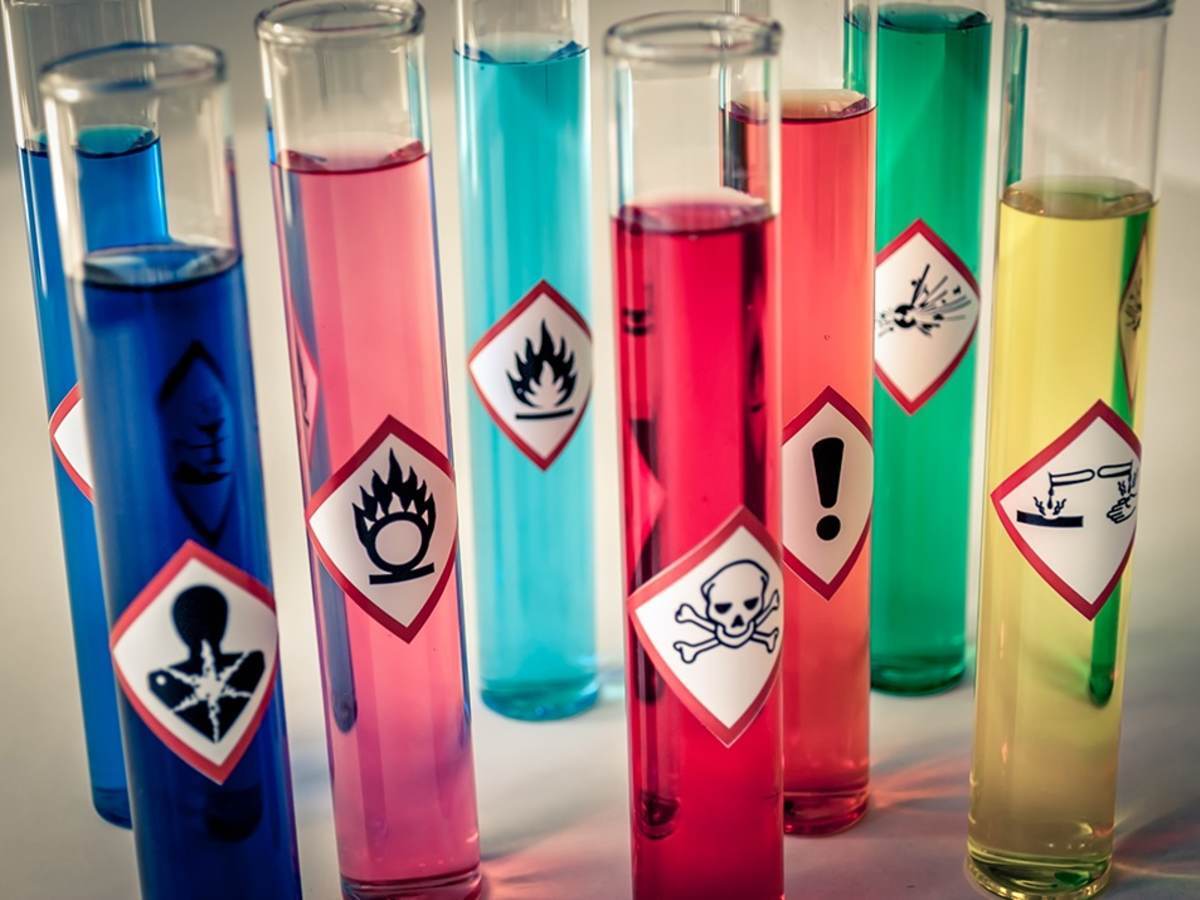February 22, 2023
By Krystal Spickler, program manager, Supply Chain team, UL Solutions
In January 2023, two new bills aimed at reducing harmful chemicals in cosmetics were published by US States. Oregon introduced Senate Bill 546 and Washington introduced House Bill 1047.
Oregon’s bill would require adoption and maintenance of a designated high priority chemicals of concern list for cosmetics. This would be conducted by the Oregon Health Authority (Authority). Classes of chemicals would be permitted on the list (for example, PFAS or phthalates). The list would also be posted on the website and subject to review every three years.
After Jan. 1, 2025, manufacturers of cosmetic products that contain a chemical on the Authority’s list at or exceeding a de minimis concentration are required to include on their website a notice for Oregon-based consumers. The notice must meet the labeling requirements of both the Federal Food, Drug, and Cosmetics Act and the US Fair Packaging and Labeling Act. It also is required to contain a list of chemicals or chemical classes intentionally added if it is on the list of High Priority Chemicals of Concern established under the act or identified by a state agency, another state, federal agency or accredited research university, or by other information deemed credible by the Authority as:
- Harmful to the normal development of a fetus or child, or otherwise developmentally toxic
- Causing cancer, genetic damage, or reproductive harm
- Disrupting to the endocrine system
- Damaging to the nervous system, immune system, or organs or cause other systemic toxicity
- Persistent, bioaccumulative and toxic
- Very persistent and very bioaccumulative
Effective Jan. 1, 2025, the bill also prohibits the manufacture, sale, or distribution of cosmetic products containing the below chemicals if they are intentionally added above the practical quantification limit and lead or lead compounds (CAS no. 7439-92-1) in concentrations at or above 10 parts per million (ppm).
- ortho-Phthalates
- Per- and polyfluoroalkyl substances
- Formaldehyde (CAS no. 50-00-0) and Formaldehyde releasing agents
- Methylene glycol (CAS no. 463-57-0)
- Mercury and Mercury compounds (CAS no. 7439-97-6)
- Triclosan (CAS no. 3380-34-5)
- m-Phenylendiamine and its salts (CAS no. 108-45-2)
- o-Phenylendiamine and its salts (CAS no. 95-54-5)
- p-Phenylendiamine and its salts (CAS no. 106-50-3)
Washington’s bill 1047 (noted as the ‘Toxic-Free Cosmetics Act’) would also prohibit the sale, manufacture or distribution of cosmetics containing the above list of chemicals after Jan. 1, 2025, with a lower limit for lead and lead compounds (1 ppm). It also allows in-state retailers who possess cosmetics on the date the restriction takes effect to sell through their stocks until Jan. 1, 2026.
Additionally, the bill would require Washington’s Department of Ecology to review the hazards of chemicals or chemical classes that would achieve the same or similar technical purpose in cosmetics as the restricted chemicals by June 1, 2024, which would be made public. By May 2024, the Department should develop initiatives for small business cosmetic manufacturers, designed to identify cosmetic products that do not contain hazards identified in the safer alternatives process.
On Feb. 7, 2023, California Assembly Bill 496 was published. It proposes to modify California’s existing Toxic-Free Cosmetics Act (passed into law in 2020), which takes effect Jan. 1, 2025. The amendments would add the following chemicals to the list of 24 restricted substances in the existing text.
- Lily aldehyde (CAS no. 80-54-6)
- Acetaldehyde (CAS no. 75-07-0)
- Cyclohexylamine (CAS no. 108-91-8)
- Cyclotetrasiloxane (CAS no. 556-67-2)
- Phytonadione (CAS no. 84-80-0)
- Sodium perborate (CAS no. 15120-21-5)
- Styrene (CAS no. 100-42-5)
- Trichloroacetic acid (CAS no. 76-03-9)
- Tricresyl phosphate (CAS no. 1330-78-5)
- Vinyl acetate (CAS no. 108-05-4)
- 2-Chloracetamide (CAS no. 79-07-2)
- Allyl isothiocyanate (CAS no. 57-06-7)
- Anthraquinone (CAS no. 84-65-1)
- Malachite green (CAS no. 569-64-2)
- Oil from the seeds of Laurus nobilis L. (CAS no. 84603-73-6)
- Pyrogallol (CAS no. 87-66-1
- C.I. Disperse blue 1 (CAS no. 2475-45-8)
- Trisodium nitrilotriacetate (CAS no. 5064-31-3)
- The following boron substances:
- (A) Perboric acids:
- Sodium salt (CAS no. 11138-47-9)
- Sodium salt, monohydrate (CAS no. 12040-72-1)
- Sodium perborate monohydrate (CAS no. 10332-33-9)
- (B) Boric acid (CAS nos. 10043-35-3 and 11113-50-1)
- (C) Borates, tetraborates, octaborates, and boric acid salts and esters, including all of the following:
- Disodium octaborate anhydrous (CAS no. 12008-41-2)
- Disodium octaborate tetrahydrate (CAS no. 12280-03-4)
- 2-Aminoethanol, monoester with boric acid (CAS no. 10377-81-8)
- 2-Hydroxypropyl ammonium dihydrogen orthoborate (CAS no. 68003-13-4)
- Potassium borate, boric acid potassium salt (CAS no. 12712-38-8)
- Trioctyldodecyl borate
- Zinc borate (CAS no. 1332-07-6)
- Sodium borate, disodium tetraborate anhydrous; boric acid, sodium salt (CAS no. 1330-43-4)
- Tetraboron disodium heptaoxide, hydrate (CAS no. 12267-73-1)
- Orthoboric acid, sodium salt (CAS no. 13840-56-7)
- Disodium tetraborate decahydrate; Borax decahydrate (CAS no. 1303-96-4)
- Disodium tetraborate pentahydrate; Borax pentahydrate (CAS no. 12179-04-3)
- Disodium octaborate tetrahydrate (CAS no. 12280-03-4)
- (A) Perboric acids:
- C.I. disperse blue 3 (CAS no. 2475-46-9)
- Basic green 1 (CAS no. 633-03-4)
- Basic blue 7 (CAS no. 2390-60-5)
- 3(or5)-((4-(Benzylmethylamino)phenyl)azo)-1,2-(or1,4)-dimethyl-1H-1,2,4-triazolium and its salts (CAS nos. 89959-98-8 and 12221-69-1)
- Basic violet 4 (CAS no. 2390-59-2)
- Basic blue 3 (CAS no. 33203-82-6)
- Basic blue 9 (CAS no. 61-73-4)
References
Regulatory Roundup Newsletter
Never miss an update
UL, the global safety science leader, can keep you updated on the latest events with a variety of materials, ranging from the latest regulatory news, webinars, white papers, events, industry insights and more.
Subscribe to our monthly Regulatory Roundup Newsletter and stay up to date on current and upcoming regulations and all the latest chemical industry news.
Safety Data Sheet (SDS) Authoring and Labeling Services
Create, maintain and distribute comprehensive SDSs and labels to meet your increasingly complex global compliance requirements.
Chemical Regulatory Compliance
Manage your chemical compliance needs with the help of global regulatory expertise and leading resources.
Chemical Compliance Training
We provide a series of chemical regulatory training programs designed to help understand the diverse set of requirements and how to confront them.
Get connected with our sales team
Thanks for your interest in our products and services. Let's collect some information so we can connect you with the right person.





